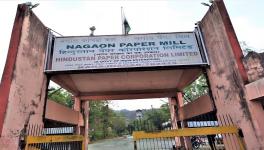Setback for Banks: NCLAT Elevates Operational Creditors, Reduces Importance of COC
Image for representational use only.Image Courtesy : Financial express
The National Company Law Appellate Tribunal (NCLAT), in a very recent ruling that has a crucial bearing on the distribution of the available amount, has quietly elevated operational creditors at the expense of financial creditors, which, for all practical purposes, are banks.
The NCLAT has simultaneously reduced the importance of the Committee of Creditors (COC) that so far has had a perceptible importance in the decisions on distribution of the available amount in the cases under the Insolvency and Bankruptcy Code (IBC), 2016.
The NCLAT ruling pertains to the Essar Steel resolution case, in which, orders keep on multiplying as the Ruias make last-ditch effort to retain control of the company; in other words, prevent take-over by ArcelorMittal, whose bid has been accepted.
The understanding, which has so far prevailed and which to an appreciable extent found reflection in cases disposed without reference to the NCLAT, is that in the distribution of the available amount, the financial creditors will have a much higher share and operational creditors will have a lesser share. Also, given the huge quantum of bank funds locked in the IBC cases, the COC, so far, has been having a say, even if that is informal, in the distribution of the available funds.
Now, in one stroke, the NCLAT has ruled that the COC will have no say in the distribution of the available funds and that operational creditors will be treated almost at par with the financial creditors. This simply means that banks will have to accept much lower amount and, therefore, the operational creditors will become entitled to an amount higher than hitherto. This is, knowledgeable quarters agree, a huge setback for banks for whom substantial haircuts have become the order of the day.
Going by the available pointers, the banks, which almost invariably include State Bank of India (SBI) – where loans add up to a large amount, are likely to prefer an appeal. Their contention is that banks are secured creditors and preference for them is in-built in the rules and procedures applicable.
For the record, it may be mentioned that the IBC, 2016, which was gazetted on May 28, 2016, is an Act to consolidate and amend laws relating to reorganisation and insolvency of “corporate persons” (companies), partnership firms and individuals in a timebound manner to maximise value of assets, promote entrepreneurship, ensure availability of credit and balance interest of all stakeholders including alteration in order of priority of payment of the government dues.
Also read: Is Essar Group Fudging Insolvency and Bankruptcy Code Process?
It has paved the way for the formation of the Insolvency and Bankruptcy Board of India. The IBC marks an important economic reform to tackle the continuously accentuating non-performing assets (NPAs) problem being faced by the banking sector; it is designed to function on ‘resolve or liquidate’ diktat. The resolution period is 180 days, extendable to 270 days in exceptional circumstances.
Financial creditor means any person to whom a financial debt is owed and includes a person to whom such debt has been legally assigned or transferred. In simple terms, the process involves borrowing of money from the banking system against payment of interest and in which the quantum of borrowing, rate of interest and duration for which loans are sanctioned are key inputs.
Operational creditor is defined as a person to whom an operational debt is owed, including debt that has been legally assigned or transferred. Operational debt may arise out of provision of goods and services or dues arising of employment or dues arising under a law and is payable to central/state governments. Transaction on operation is the pivot.
Financial creditor and operational creditor are different in the sense that their liabilities arise from different origins. Whereas a financial creditor is liable because of a contract, such as, loan or debt, operational creditor is liable because of operation-related transactions.
The COC for the IBC cases is constituted by the designated Resolution Professional (RP) after collating all claims received against a company and after determination of the financial position of that company. The COC can get requisition from the RP for any information relevant to the case at hand. A major chunk of corporate debtors is that of financial creditors and, therefore, to recognise their substantial interest, a COC is formed. The SRP’s managerial decision is ratified by COC.
National Company Law Tribunal is a quasi-judicial authority incorporated under Section 408 of the Companies Act, 2013 for dealing with corporate disputes. It is the adjudicating authority for insolvency resolution process. Under the provision, it can, inter alia, investigate, freeze assets and transfer shares.
NCLAT has been set up under Section 410 of the Companies Act, 2013. It hears appeals against the orders of NCLTs with effect from June 1, 2016. It is also the Appellate Tribunal for hearing appeals against orders passed by NCLTs under Section 61 of the IBC, 2016 with effect from December 1, 2016. It is also authorised to hear appeals against the orders passed by the Insolvency and Bankruptcy Board of India as also the Competition Commission of India.
The writer is a senior journalist based in Kolkata, who used to work earlier with The Hindu Business Line and Economic Times.
Also read: Set Up Circuit Benches of NCLAT Within 6 Months, SC Tells Centre
Get the latest reports & analysis with people's perspective on Protests, movements & deep analytical videos, discussions of the current affairs in your Telegram app. Subscribe to NewsClick's Telegram channel & get Real-Time updates on stories, as they get published on our website.
























